Write Us
We are just a call away
[ LET’S TALK AI ]
X
Discover AI-
Powered Solutions
Get ready to explore cutting-edge AI technologies that can transform your workflow!

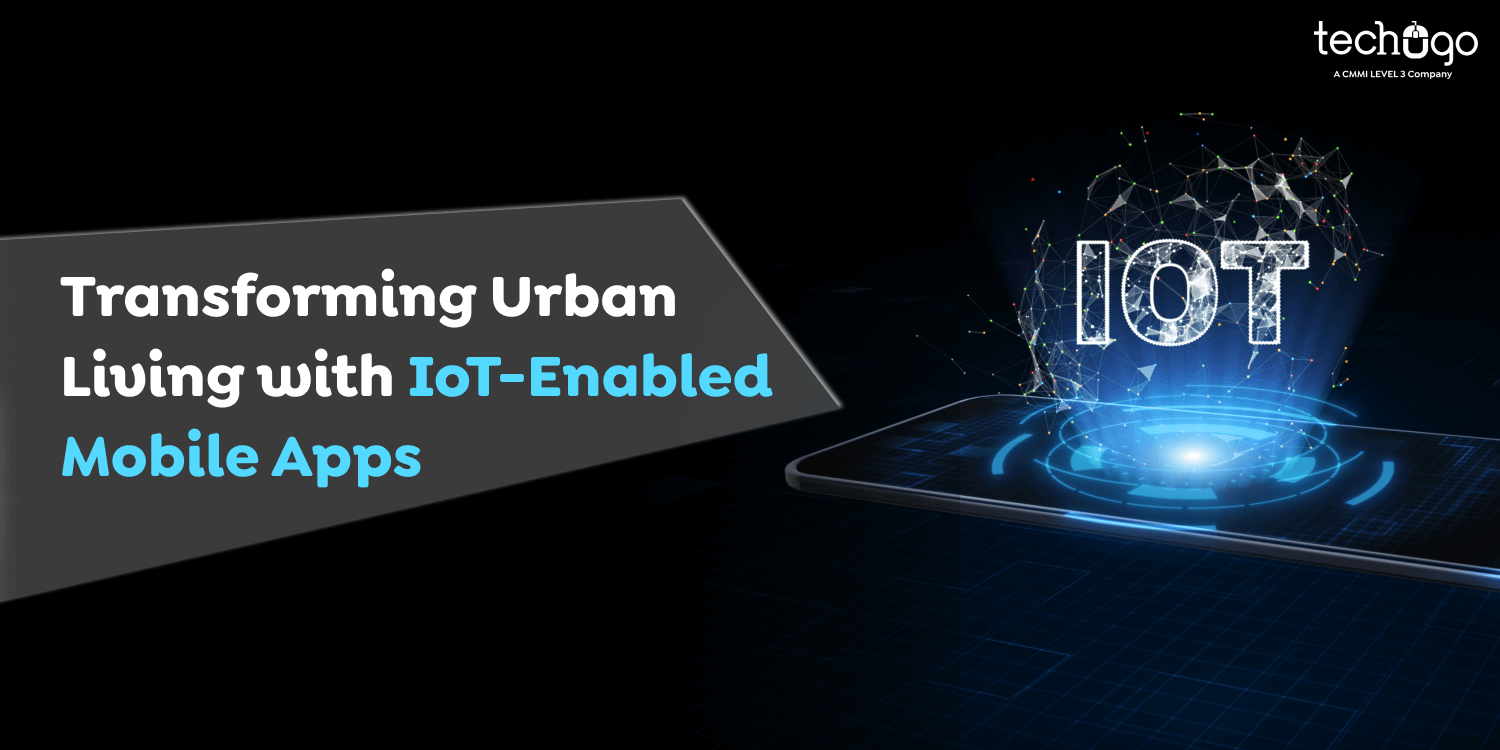
The Internet of Things (IoT) has redefined how we interact with technology. IoTs combine devices, systems, and applications to create an ecosystem that increases efficiency and convenience. Gradually, IoT is improving the concept of a smart, connected lifestyle from smart homes to industrial control, where mundane, everyday things talk and exchange information in real time.
The most impactful application of IoT is the creation of smart city initiatives. Urban environments use IoT to maximize the usage of available resources, enhance public services, and improve the quality of life for inhabitants. In this sense, mobile applications mediate more complex IoT systems and their end-users. Whether controlling appliances at home, managing energy usage, or traffic flow, IoT-enabled mobile apps empower individuals and communities to access and interact with intelligent systems without any hassle.
We will explore the world of IoT app development and consider its significance for facing modern challenges in cities. By combining IoT and mobile app development, business owners and developers may create previously unthinkable opportunities to innovate and address an ever-changing world’s needs.
IoT application programs communicate with Internet of Things devices. Users can monitor and control the connected systems from mobile devices such as smartphones and tablets. Such applications act as the gateway between the user and the IoT environment, providing real-time data exchange and process automation.
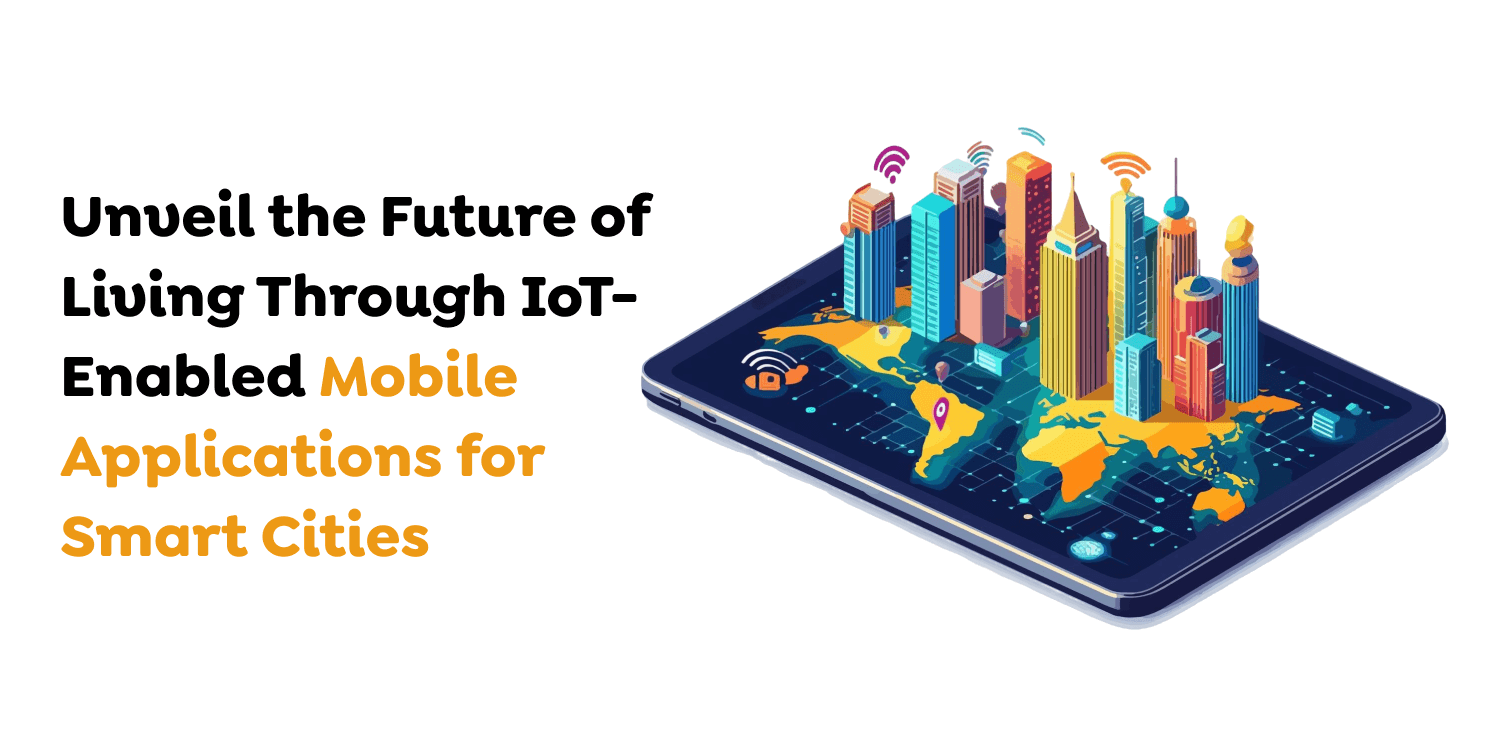
IoT-enabled mobile apps are based on a few essential features:
Sensors measure information from the physical world (e.g., temperature, humidity, movement, or light) and forward it to the IoT system. On the other hand, actuators act based on the data received, e.g., controlling the thermostat or closing the lights. Combined, they act as the sensory and reactive layers of IoT applications.
Connectivity is the backbone of any IoT application, ensuring communication between IoT devices and mobile apps. Wi-Fi, Bluetooth, Zigbee, and cellular networks (3G, 4G, 5G) are critical for building stable data channels for bidirectional data transmission.
Cloud platforms host and process enormous amounts of IoT-derived data available to mobile applications. They enable in-situ analytics and remote device management-driven knowledge. The cloud is the network’s core, connecting all devices, sensors, and applications.
Edge computing refers to the local data processing at IoT devices or local servers instead of transferring it only to cloud servers. This method improves latency, real-time decision-making, and bandwidth consumption. For instance, edge computing enables immediate responses to equipment anomalies in industrial IoT applications, improving operational efficiency.
By combining data analysis and machine learning algorithms, IoT-based mobile apps can extract valuable insights from the vast amount of data generated by the sensors. These observations lead to predicting user behavior, system design, and, ultimately, anticipatory maintenance. For instance, smart thermostats adapt to residential temperatures according to learned preferences over time, leading to greater comfort and energy use efficacy.
Data security and privacy must be guaranteed during communication between IoT devices and mobile applications. Implementing robust encryption protocols, secure authentication mechanisms, and regular security updates helps prevent unauthorized access and data breaches. For example, healthcare IoT-enabled mobile apps must comply with strict data protection regulations to protect patients’ data.
IoT-based mobile apps require a simple UI design and a smooth user experience. Design-related considerations, such as intuitive gesture-based navigation and real-time push notifications, along with features for personalization tailored to specific user preferences, are identified. For instance, a smart home app must permit users to intuitively manage lighting, temperature, and security systems via a consistent and interactive interface.
The rise of smart cities has redefined urban living by leveraging IoT technologies to create sustainable, efficient, and responsive urban ecosystems. Key applications of IoT in this context include:
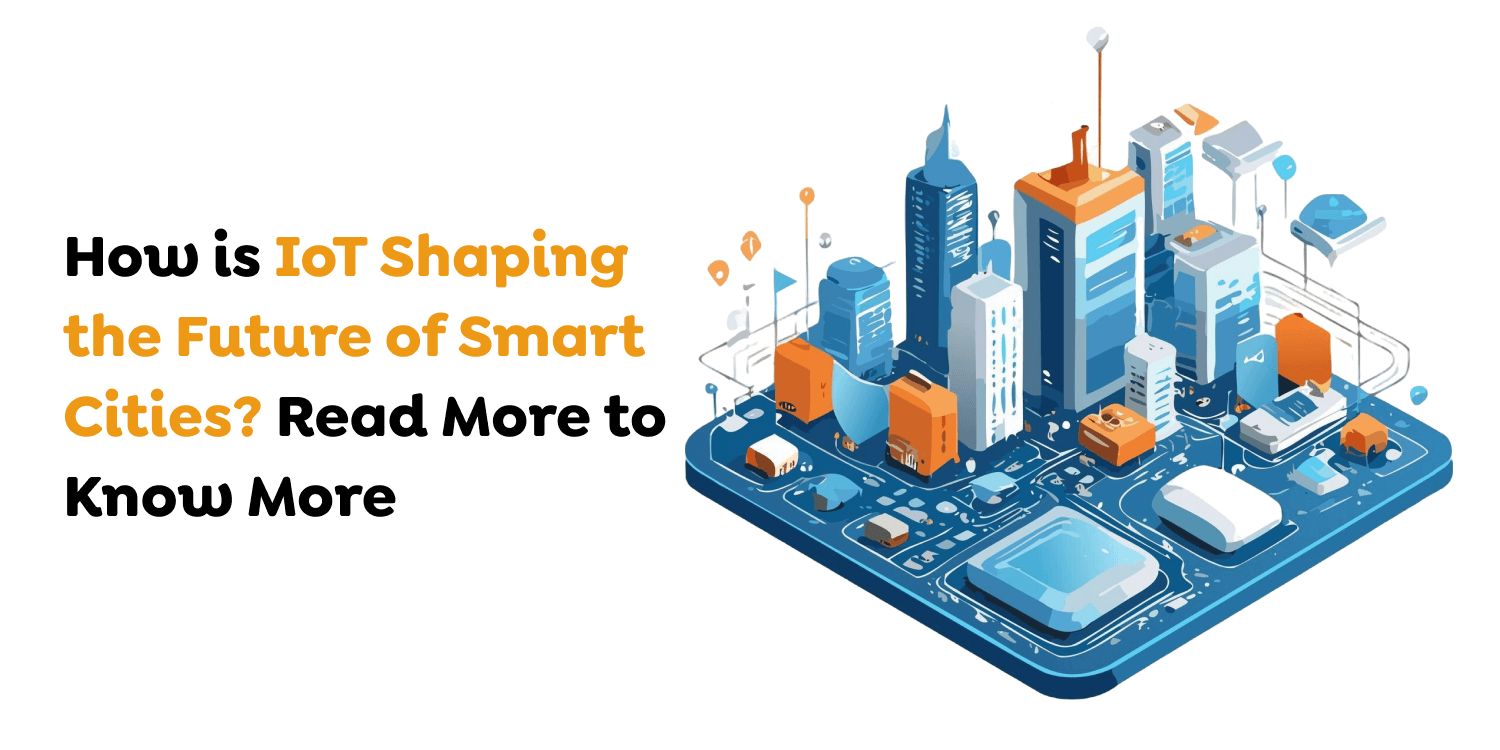
IoT devices record the health states of infrastructure elements such as bridges, roads, and buildings. By detecting structural deficiencies in real-time, cities can avoid downtime and improve safety.
IoT sensors monitor environmental attributes such as air quality, noise, and water purity. This data allows cities to respond quickly to pollution sources and maintain a healthier environment for the population.
IoT-based surveillance systems and sensors improve public safety by identifying security threats, monitoring criminal activity, and observing the duration of emergency response. This proactive approach improves overall public safety.
Internet of Things (IoT) healthcare apps include remote patient monitoring, intelligent medical devices, and health data analytics. These technologies enable timely medical interventions and improve overall public health outcomes.
IoT solutions monitor water usage, detect leaks, and optimize distribution systems, leading to significant water conservation and cost savings. On the other hand, an example of a water management system is Barcelona. For instance, used smart water systems (which achieved a 25% decrease in water use, thus saving more than $58 Mn each year).
IoT-based parking systems provide real-time status of the availability of parking spaces, easing traffic congestion and improving the parking experience for residents and visitors.
IoT sensors track waste contained in bins, allowing the use of optimal collection routes and schedules. This approach reduces operational costs and minimizes environmental impact. In Dubai, the use of IoT for waste management has resulted in a 40% cost reduction in waste transportation.
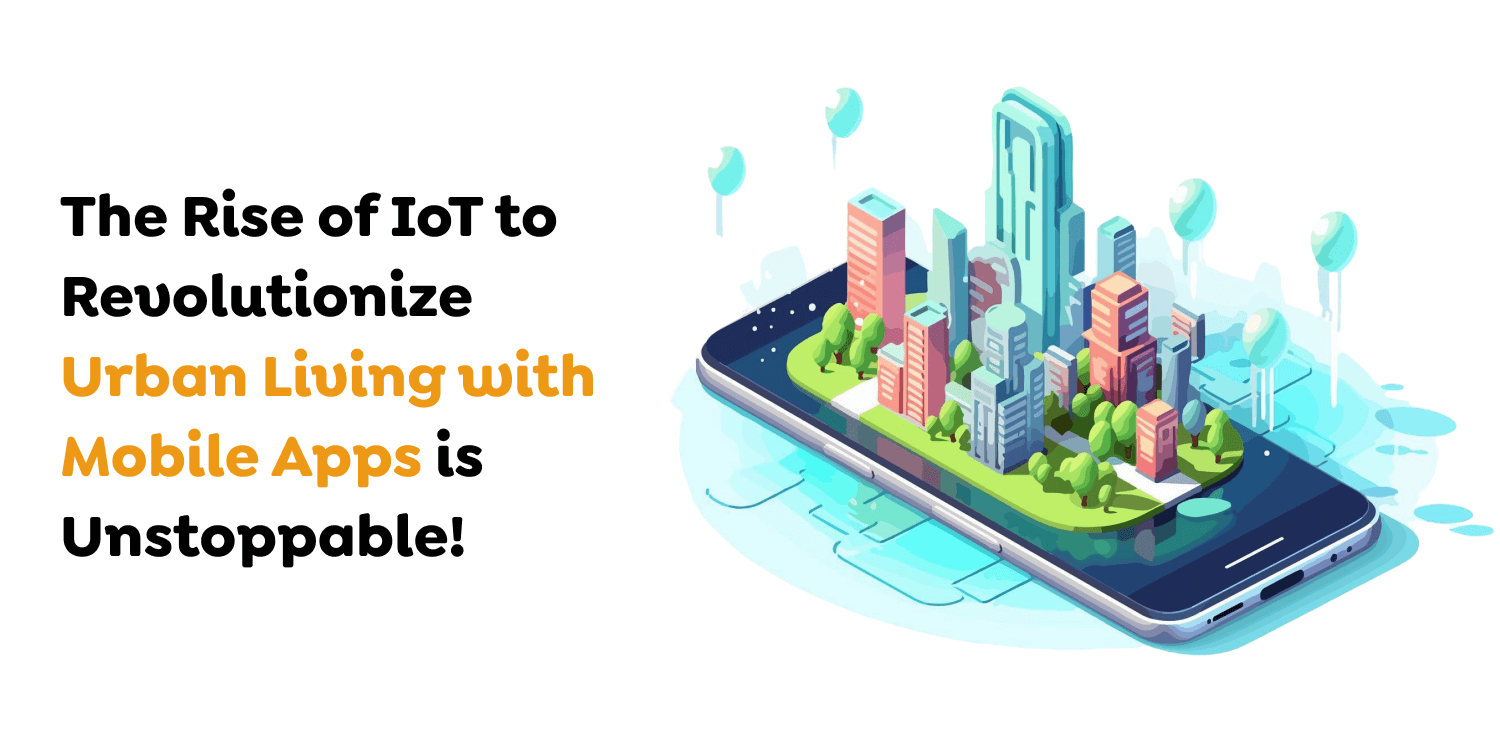
Several cities worldwide have successfully integrated Internet of Things (IoT) solutions to enhance urban living and sustainability. Here are some notable examples:
Amsterdam has been rolling out some IoT projects to enhance urban living.
A smart parking system in the city has been created to check available car park spaces in parking, thus alleviating pollution. In Amsterdam’s flexi street lights, cities now allow municipalities to use street lights, saving energy and improving public safety. The city tracks traffic in real-time and publishes data regarding current travel times on some streets so drivers can decide which routes will be optimal.
Singapore is a model for smart city development based on several IoT applications. In the city, smart streetlights dim or brighten automatically in response to the light around them, saving energy and improving public safety.
IoT sensors implanted in the homes of older people track their health and notify the family if abnormalities are identified, enhancing their quality of life. In Singapore, IoT-based waste management controls the amount of waste in bins and plans collection routes, resulting in cleanliness and efficiency.
Barcelona has integrated IoT solutions to enhance urban sustainability. The town launched smart water networks that saved 25% of water, avoiding a cost of more than $58 million per year. Intelligent lighting sensors monitor pedestrian presence and directly vary the light intensity from 0% to 30% (50%). Energy-saving IoT applications help drivers find available parking spaces, reducing the time spent searching for parking and decreasing traffic congestion.
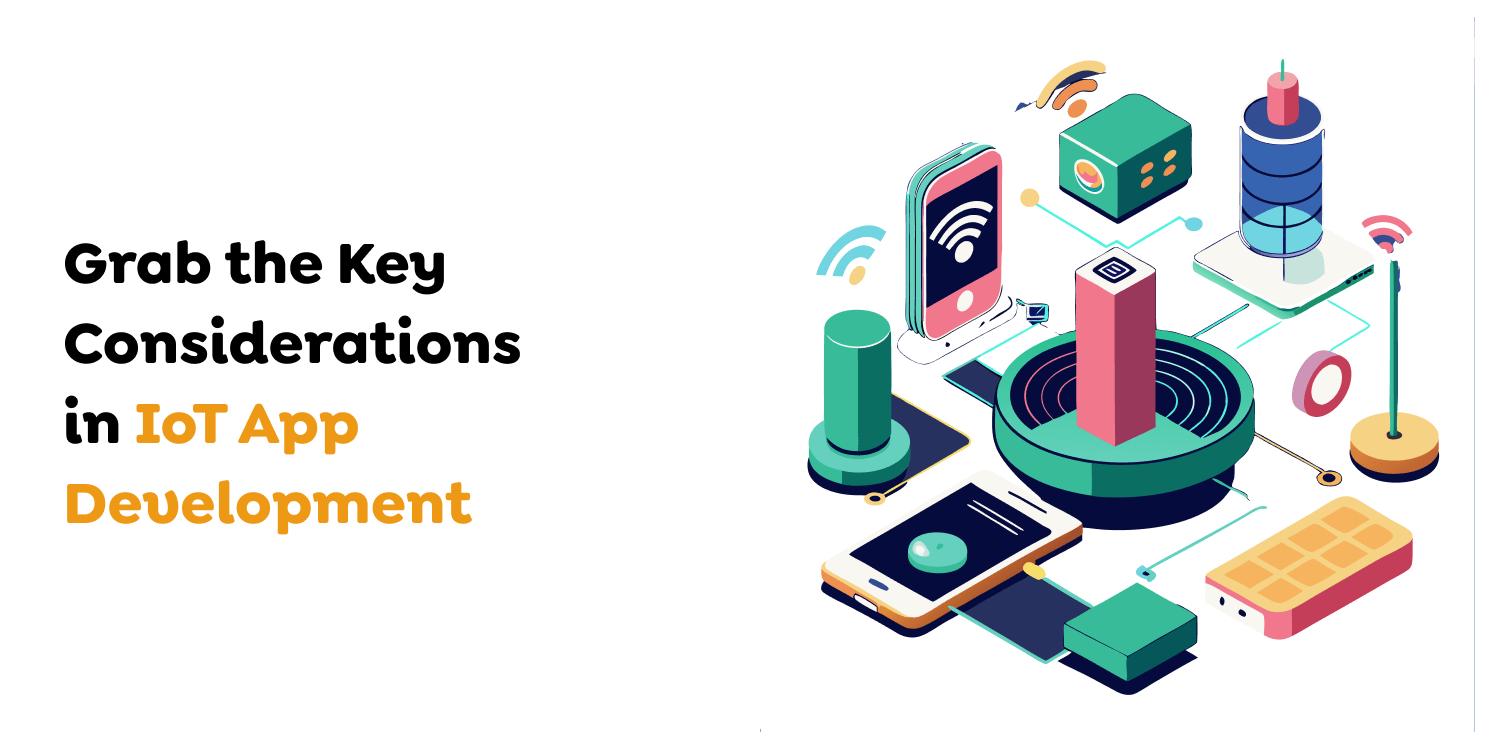
1. Security Vulnerabilities: IoT devices are vulnerable to cyberattacks, and strong security mechanisms are needed to mitigate these risks. End-to-end encryption, stable software update mechanisms, and secure authentication protocols can reduce these risks.
2. Connectivity Issues: Connectivity over various networks is not reliable. Adaptive communication protocols and redundant network links can improve connection robustness.
3. Data Management: IoT systems produce enormous volumes of data, requiring efficient storage, processing, and analysis. Implementing scalable cloud solutions and edge computing can address data management challenges.
4. Interoperability: Standardization and interoperability are necessary to integrate heterogeneous IoT devices and platforms. Adopting open standards and modular architectures can facilitate interoperability.
5. Scalability: Performance and reliability are essential as IoT networks grow. Designing inherently scalable systems, such as microservices and containerization, provides scalability for expansion.
IoT and blockchain technology integration secure and seals data. Blockchain guarantees the decentralized, tamper-proof, and transparent data of IoT devices. However, it has a flaw about water-following characteristics. There are exceptional use cases, such as supply chain management, in which provenance and the state of products matter.
For example, in the supply chain, IoT sensors monitor the state and location of goods in real-time. The blockchain tracks this data and generates an unchangeable record of all supply chain operations. This strategy can increase transparency, decrease fraud, and improve efficiency and growth.
Adding Internet of Things (IoT) technologies to mobile applications in smart cities can generate significant benefits, enhancing urban living and city management efficiency. With the help of Internet of Things (IoT)-based mobile apps, residents can access information in real time and use services individually, significantly enhancing their daily life. For example, smart parking apps send car users to unfilled parking lots, reducing search time and gridlock. Specifically, applications related to public transit systems offer real-time data, enabling commuters to plan trips better.
By implementing IoT solutions, cities can provide services on a large scale and deliver costs effectively. Lighting systems such as smart lighting control can, for example, change their brightness dynamically over the day and be adapted to occupancy, thus delivering energy savings of up to 60%. Smart street lights in Barcelona have obtained energy efficacy savings of as high as 80%. IoT devices generate large amounts of data that can be of great use to city planners and administrators when used to create an appropriate model. This data-driven approach is also conducive to better-informed decision-making regarding resource prioritization and public service provision. Examples include traffic pattern analysis, which can guide infrastructure planning and traffic management policies).
Integrating Internet of Things (IoT) technologies into mobile applications has significantly transformed urban living, leading to the development of smart cities worldwide. Below are case studies and real-world examples of this transformation.
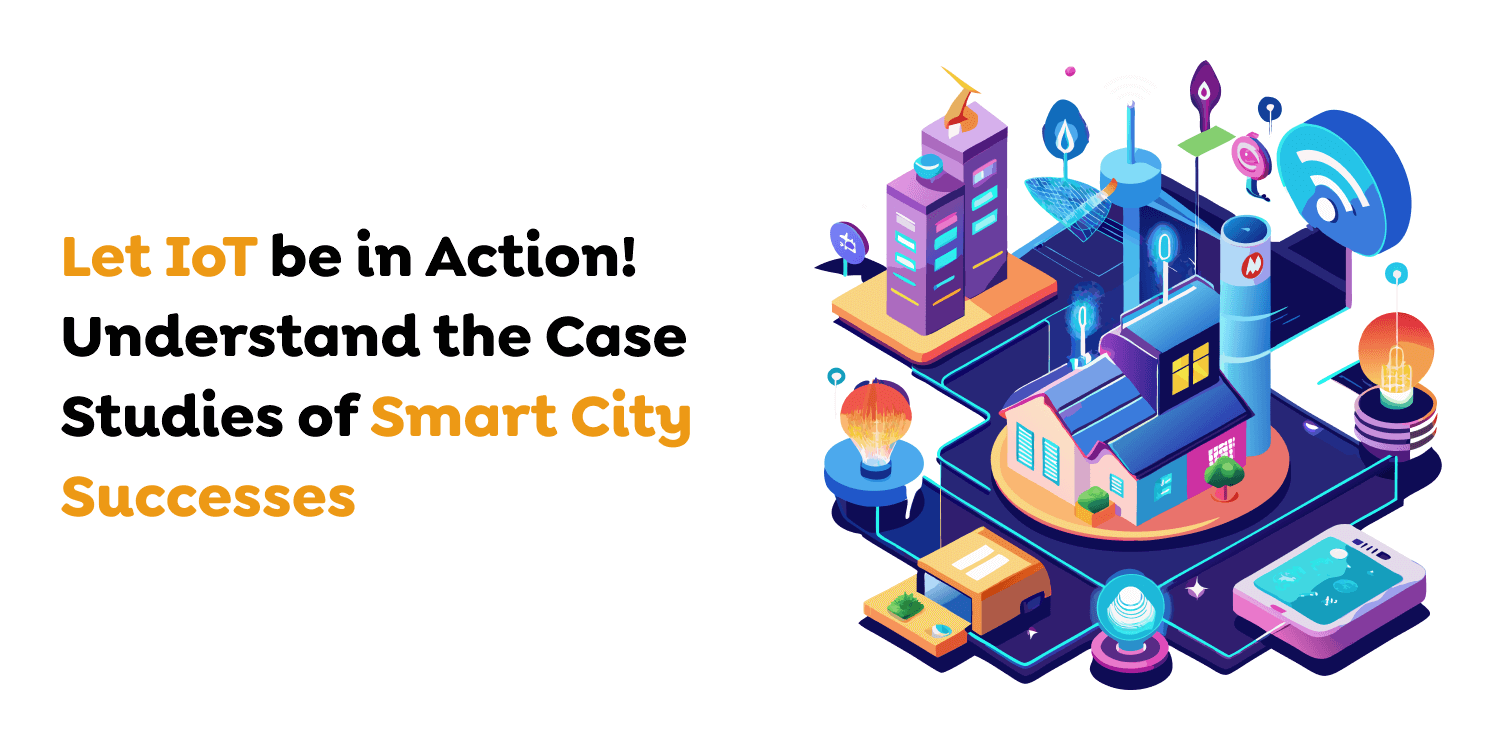
Barcelona is an example of a smart city that uses IoT technology to reduce energy, waste, and water consumption. The city has introduced smart street lights that control lighting by time of day and occupancy, resulting in massive energy savings. In addition, IoT-based waste management systems monitor the level of waste cans and optimal collection routes and schedules, thus reducing operational costs and environmental impact.
Researchers studying adaptive communication in digital cities designed smart streetlighting units, including environmental sensors and communication architectures. These roadside lights act as open-access wireless access points and form a mesh network to ensure communications in an emergency. Mobile apps deliver real-time information and services to add to this infrastructure and support public safety and urban resilience.
The MONICA project in Hamburg shows applications of IoT scale in a smart city environment. The envisaged project will enhance urban administration and infrastructure by employing many sensors and actuators. This encompasses the development of better public safety during large-scale public gatherings by utilizing real-time monitoring and management systems, which illustrates the utility of IoT in urban planning and security.
R&D companies with specialized development expertise play a key role in the popularity of IoT-based smart city apps. For example, an iOS app development company is important in designing user-friendly mobile interfaces that enable citizens to interact easily with IoT systems. Companies such as Techugo are creating smart and tailorable IoT solutions for different domains and offering a wide range of services tailored to smart city requirements.
Similarly, a blockchain app development company contributes by ensuring secure and transparent data transactions within IoT ecosystems. By combining blockchain technology, these organizations improve data authenticity and protection, essential to the proper functioning of smart city systems. For instance, Suffescom Solutions provides IoT blockchain development services, enabling enterprises to create, host, and employ their own blockchain applications on cloud-enabled solutions, thereby improving the security and effectiveness of IoT systems.
These examples and case studies highlight IoT-enabled mobile apps’ revolutionary role in smart cities. Interdisciplinary cooperation between urban planners and advanced development companies is a prerequisite to developing innovative solutions that improve urban living quality.
Urban life has been intensely changed with the arrival of on-demand Internet of Things (IoT) applications. These applications offer tailored solutions that address specific challenges in real time. An on-demand app development company is critical for implementing such tailored IoT apps, which can improve the effectiveness of smart city services.
Companies specializing in software development for IoT devices have in-house skills to develop and implement IoT applications tailored to the specific functionality of the urban context. Their contributions include developing apps tailored to particular city requirements, ensuring relevance and effectiveness. They are jointly and seamlessly integrated with the existing city infrastructure to work together. They create solutions that can grow in step with urban development and provide intuitive interfaces enabling smooth interactions between citizens and IoTs.
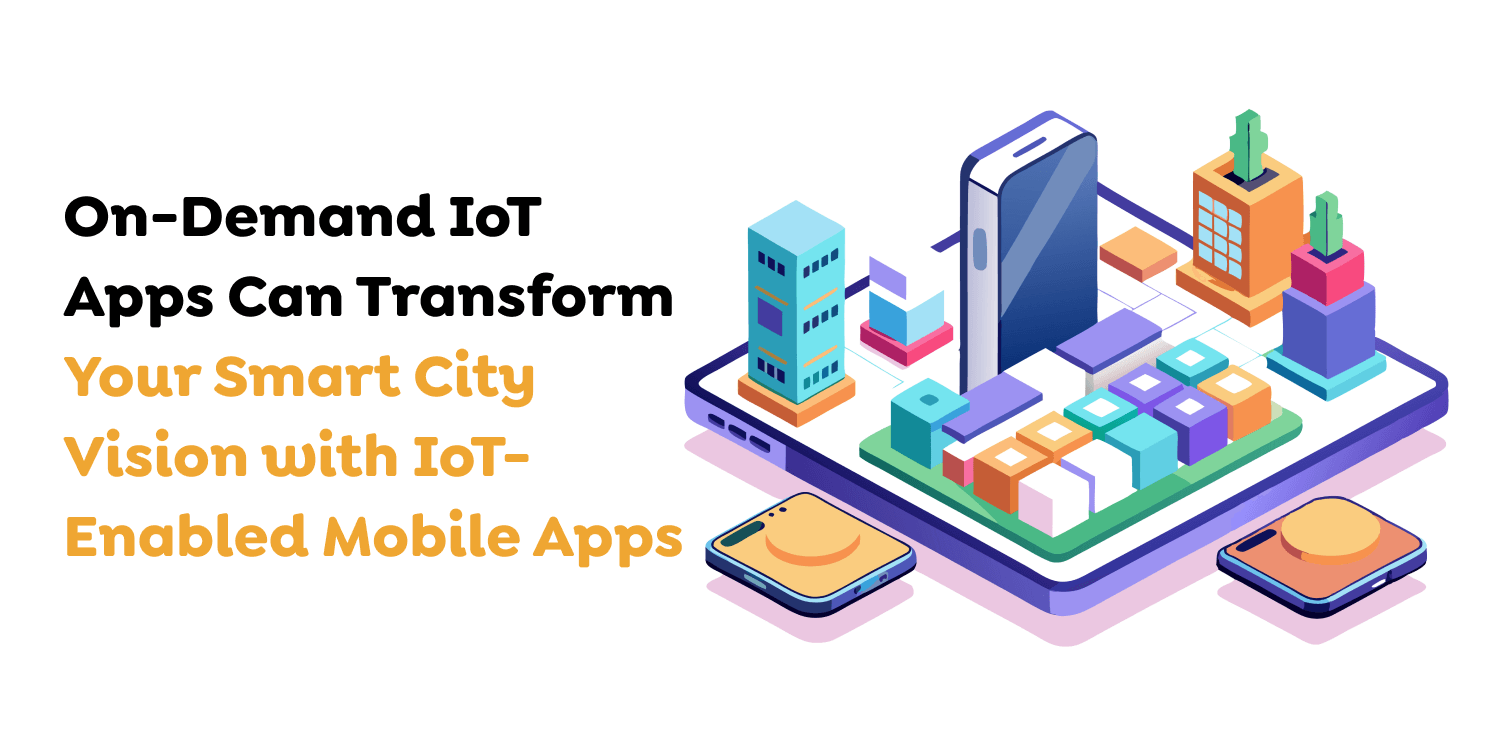
IoT-based smart parking solutions use sensors to track real-time parking space occupancy. Drivers access this data via mobile applications, allowing them to find and book parking spaces quickly, reducing traffic and tailpipe emissions. For instance, location monitoring of buses, trains, and trams is achieved via IoT devices equipped with GPS and other sensors. This data is delivered to a centralized system accessible directly through mobile applications.
IoT devices in coaches (public transport) provide real-time geographical information that can be accessed through mobile applications. Commuters can track arrival times, plan routes, and receive updates on delays, enhancing the convenience and reliability of public transportation. The involvement of IoT in public transport at the urban level brings about a paradigm shift in urban mobility by offering on-ground real-time data and an enhanced passenger experience.
Innovative lighting systems that use IoT are intelligent and adapt the light level to environmental conditions and presence, saving substantial energy. For example, environmentally intelligent street lights equipped with ecological sensors and communication technologies can act as a public Wi-Fi hotspot and build a mesh network to ensure communication during disasters.
IoT-based waste management uses sensors to track the levels of waste containers so that the schedule and pick-up routes can be optimized. This approach reduces operational costs and helps in tackling environmental issues. As one example, intelligent waste management systems can identify the presence of vehicles and convert the resulting data into real-time occupancy reports, which can enhance the use of parking lots and ease traffic bottlenecks.
Working with a mobile app development company in UAE presents an increasing number of benefits for developing IoT applications specifically designed for the specific needs of the market of the UAE region. Here are five key benefits:
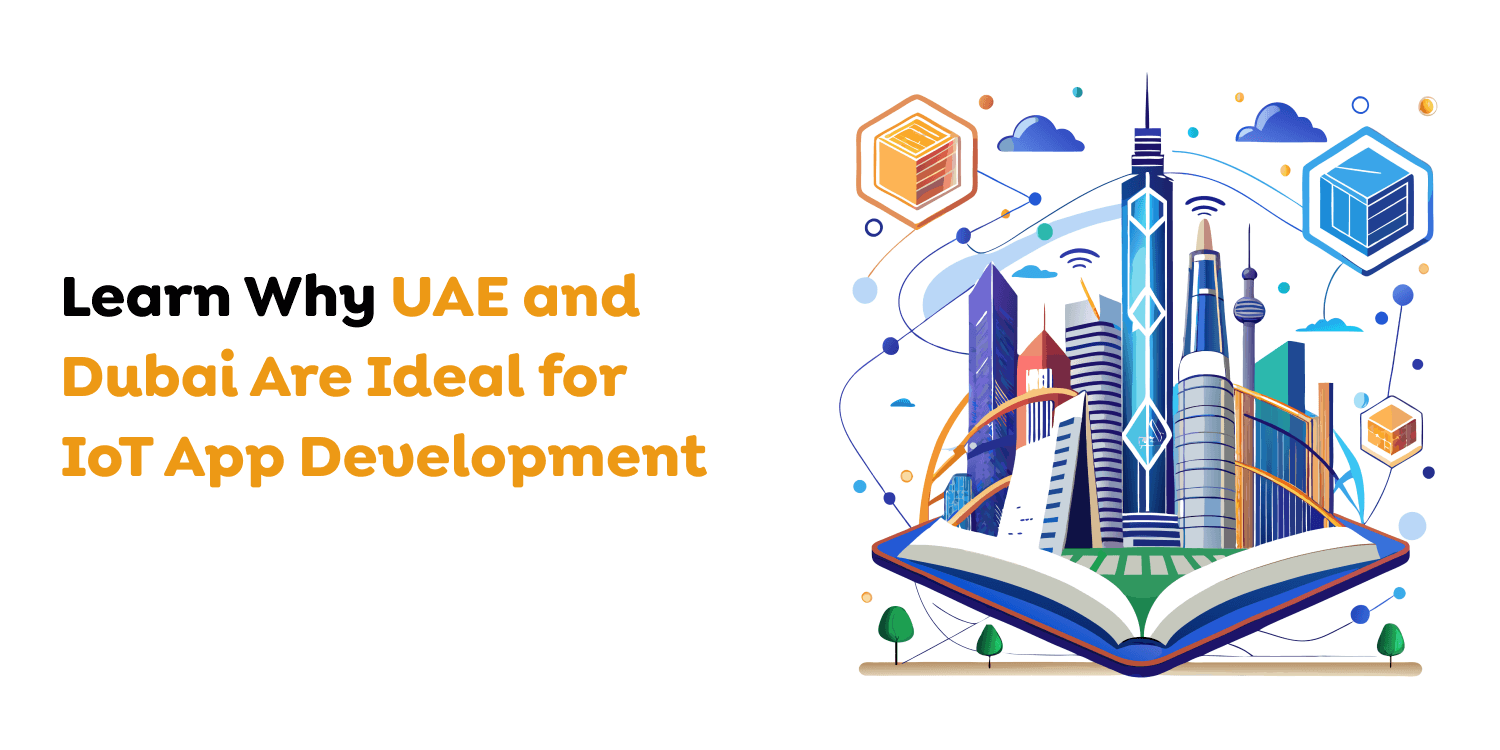
Locally rooted companies are well-positioned to understand local consumer behavior, preferences, and cultural aspects. This understanding allows Ifor to develop meaningful locations for the target audience, increasing user engagement and satisfaction.
Companies from the UAE are particularly adept at the local technological infrastructure and regulatory environment. This knowledge can be used naturally to slow the adoption of IoT applications in existing infrastructure, both for compliance and operational efficiency.
Integration with local developers offers low-cost alternatives to using international consultancy firms. With competitive pricing in the UAE market, companies can develop high-quality IoT solutions without paying top dollar to mobile app developers from countries such as the US or Europe.
The proximity to the development team promotes faster communication and better collaboration, accelerating the development cycle. This power enables firms to market IoT applications quickly, leading to a competitive advantage in the marketplace.
Companies based in the UAE are taking the lead in deploying and implementing the newest technological developments. Partnering with them ensures that your IoT applications leverage state-of-the-art technologies, enhancing functionality and user experience.
Techugo is a top mobile app development company in UAE with a global presence. It specializes in making bespoke mobile applications for a wide range of applications. Its development pipeline incorporates Artificial intelligence, AR, VR, and IoT technologies. Techugo’s expertise in delivering exceptional digital solutions has enabled businesses to gain a competitive edge in the market.
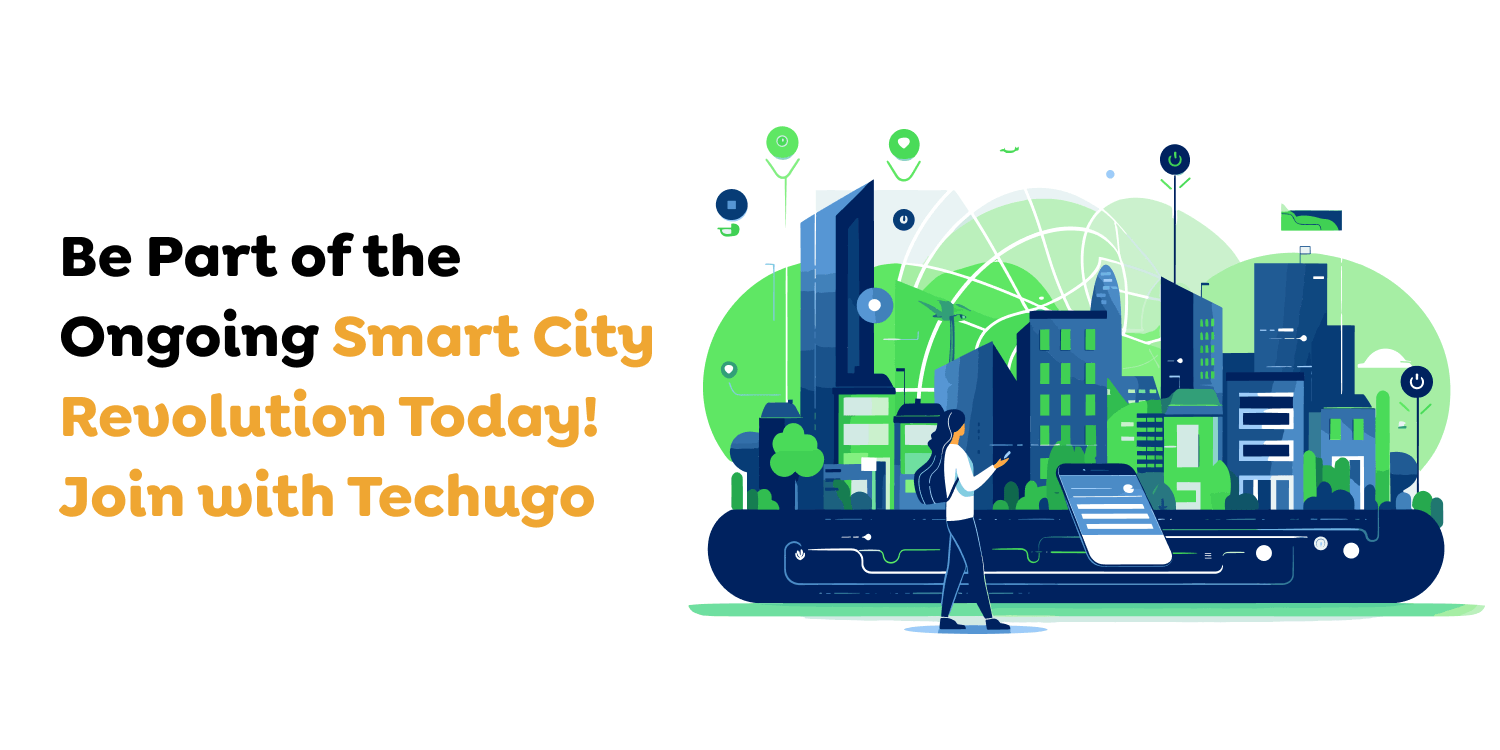
The Internet of Things (IoT) changes how people live in cities by embedding all aspects of daily life in technology. IoT solutions transform cities into more efficient, sustainable, and livable spaces, enhance traffic management and waste systems, optimize energy use, and bolster security. Consider partnering with a top-tier mobile app development company in Dubai like Techugo to develop your idea of an IoT app. Techugo, having a global footprint and a strong performance history, is an IoE company focusing on the design of innovative, simple-to-use applications aimed at adopting the latest technology. Their expertise spans various industries, ensuring tailored solutions that meet your needs.
Working with us can make understanding the intricacies of developing IoT apps easier. Your project will be executed carefully and effectively. Their focus on quality and customer satisfaction ensures they are a trustworthy partner for realizing your concept.
Leverage IoT technologies to embrace the future of urban living. Get in touch and partner with us to create exciting new ways to improve city living while promoting sustainable growth.
Write Us
sales@techugo.comOr fill this form